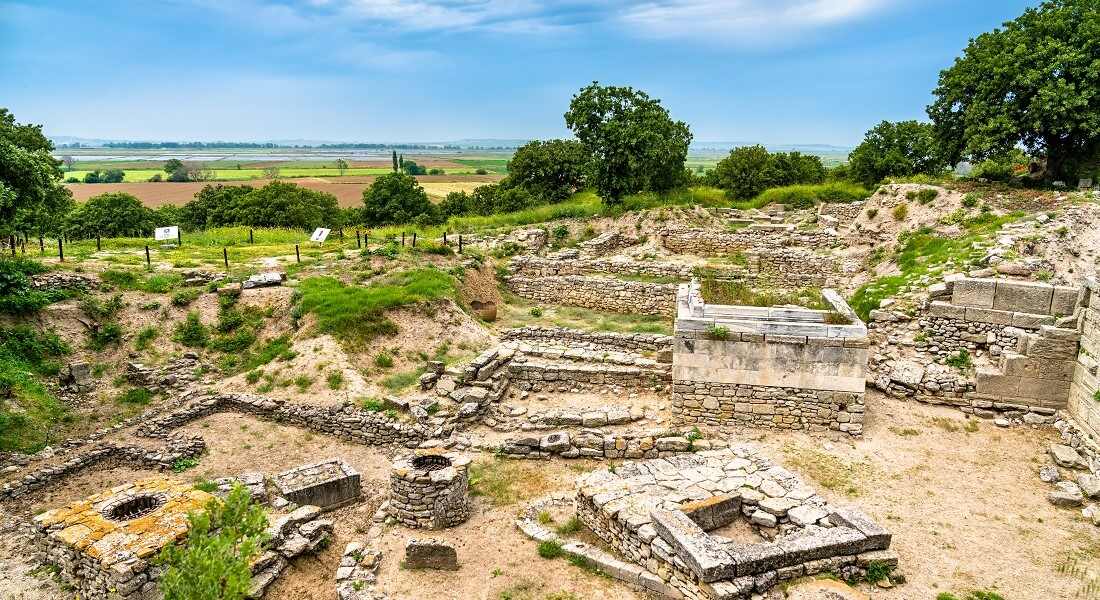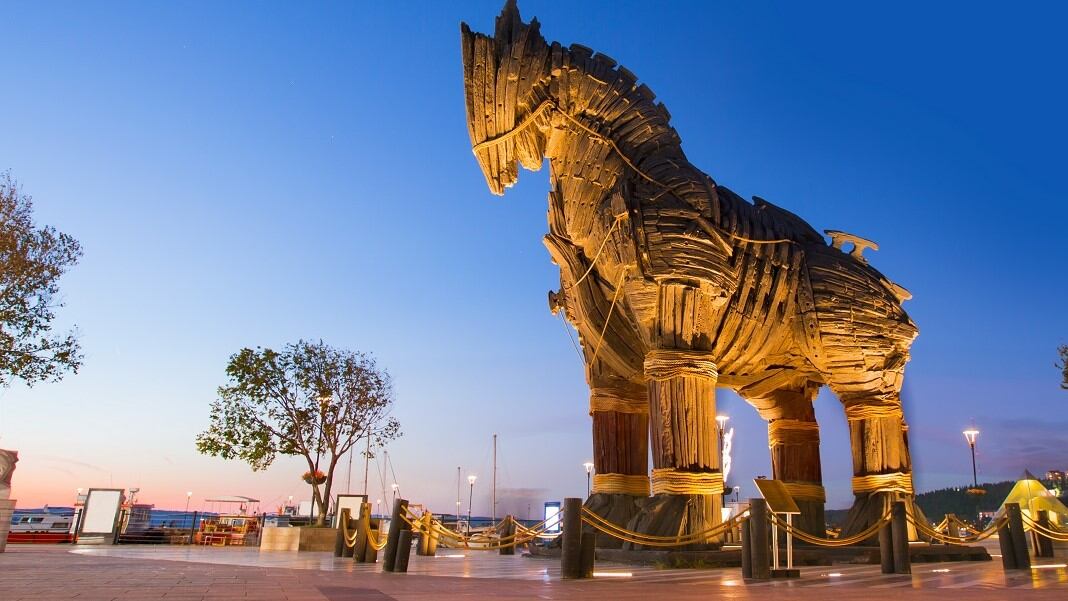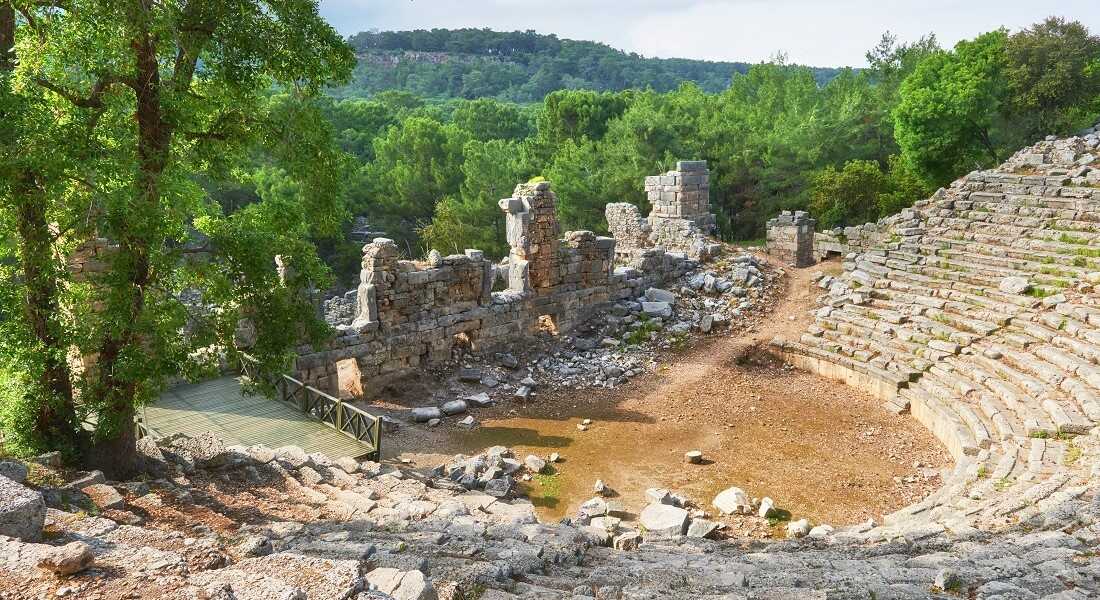
Troy, the ancient city that has been the subject of myths, legends, and literature for thousands of years, is one of the most fascinating archaeological sites in the world. Located in modern-day Turkey, the city was made famous by Homer’s epic poem, the Iliad, which tells the story of the Trojan War. However, Troy is much more than just a literary creation. It was an actual city that existed for more than 4,000 years and was home to several civilizations.
Despite being a site of great historical and cultural significance, Troy was lost to the world for many centuries. Heinrich Schliemann, a German archaeologist who thought he had found the fabled city from Homer’s epic, finally made a new discovery of the city in the late 19th century. Since then, a lot of archeological research has been done on Troy, and many excavations have given us new information about its complicated past. A glimpse into the fascinating history and culture of this ancient city, Troy is today a UNESCO World Heritage Site as well as a well-known tourist site that attracts visitors from all over the world.

The Trojan War is one of the most famous battles in Greek mythology. Legend has it that the conflict involved the Greeks and the Trojans, a city-state in ancient Anatolia (modern-day Turkey). The abduction of Helen, wife of the Greek king Menelaus, by the Trojan prince Paris sparked a conflict that lasted for ten years and continued for ten years. Because of this, the Greeks sent a big group to get Helen back, which led to the destruction of Troy.
Legendary warriors and gods fought in the Trojan War. The most famous Greek heroes included Achilles, the greatest warrior of the Greeks; Odysseus, the cunning and resourceful warrior; and Agamemnon, the leader of the Greek forces. The bravest and most honorable Trojan warrior, Hector, led the Trojans. Zeus, Apollo, and Athena played significant roles in the war. Aphrodite, Ares, and Apollo helped the Trojans.
One of the best-known parts of the Trojan War is the Trojan Horse, an enormous wooden horse that the Greeks rode into Troy. According to legend, after ten years of war, the Greeks constructed the horse and hid soldiers inside it. The Trojans, believing the horse was a gift of surrender, brought it inside the city walls. Once inside, the Greek soldiers emerged from their horses and opened the gates, allowing the Greek army to enter and conquer Troy. The Trojan Horse has since become a symbol of treachery and deceit.
Troy, also known as Troia or Ilion, is an ancient city in modern-day Turkey. The Iliad, an epic poem by Homer that tells the tale of the Trojan War, is what made it well-known. Archaeologists have excavated the Troy site, revealing a complex series of layers and structures that span over 4,000 years of history. In recognition of its importance to world history, Troy Ancient City was designated a UNESCO World Heritage Site in 1998. Today, visitors can explore the ruins of the city, including its walls, gates, temples, and houses, and learn about the daily lives and customs of the people who lived there. The site is a testament to the enduring legacy of one of the most famous stories in all literature.

The city of Troy was built and destroyed several times throughout history. So, archaeologists have found nine different layers of the town. Each layer represents another time when people lived there. The earliest layers date back to the early Bronze Age, while the final layer dates to the Byzantine period. Troy VI is the most famous layer. It is thought that a massive fire, possibly caused by the Trojan War, burned it down.
Troy had defensive walls and gates atop a hill. The city’s alleyways and streets were grid-like. People often used frescoes and paintings to decorate the walls of buildings constructed from mud bricks and wood. The ancient city walls of Troy, which could be up to 5 meters thick and were built using massive stone blocks, are the most impressive structure. The walls of Troy served as a crucial defense mechanism, protecting the city from invaders.
Heinrich Schliemann was a German businessman obsessed with finding the mythical city of Troy. He spent years examining historical texts and maps of the village, believing it was in a natural environment. 1870 was the year that ultimately saw him embark on an excursion to Turkey. He unearthed the remains of Troy in the Hisarlik region of Turkey. The finding made by Schliemann was a significant step forward in the field of archaeology, as it assisted in demonstrating the truthfulness of old myths and stories.
After discovering the site of Troy, Schliemann began excavating the ancient city. He worked tirelessly for several years, uncovering layers of the city and documenting his findings. Schliemann’s work was continued by other archaeologists, including Wilhelm Dorpfeld and Carl Blegen, who discovered more of the city’s structures and artifacts. Today, Troy is a primary archaeological site visited by thousands of tourists annually.
The discoveries made at the site of Troy have shed light on the ancient world and provided insight into the historical events that inspired the Trojan War. In addition, the excavation uncovered many items, including pottery, jewelry, weapons, and tools, that provided insight into the daily lives of those who lived in the city. The site of Troy has also been an important symbol of cultural heritage and national identity for Turkey and the wider world.

The excavation of Troy has unearthed a vast collection of artifacts that offer insight into the daily life of the ancient city’s inhabitants. The artifacts include pottery, jewelry, tools, weapons, and larger structures such as buildings and city walls. Some of the most significant artifacts discovered at Troy include the gold jewelry known as the “Treasure of Priam,” believed to have belonged to the Trojan royal family.
The artifacts discovered at Troy have great historical and cultural significance, as they offer a glimpse into the daily life of the ancient city’s inhabitants. In addition, they provide evidence of the city’s economic and social structures and artistic and technological achievements. The artifacts also help to support the historical accuracy of the ancient myths and legends associated with Troy and the Trojan War.
The artifacts discovered at Troy are of immense value. They are carefully preserved and displayed in museums in Turkey and worldwide. The Museum of Troy in Turkey is dedicated to the artifacts found at the site and is a popular tourist attraction. The artifacts are set up so visitors can understand their importance to history and culture. Preserving the relics is ongoing, and efforts are made to protect them from damage or deterioration.
The legend of Troy and the subsequent Trojan War have long inspired writers, artists, and musicians. The works of Homer, including the Iliad and the Odyssey, are among the most famous literary works of all time and have inspired countless other writers and artists. In addition, the story of Troy has been retold and reimagined in numerous ways, from Shakespeare’s Troilus and Cressida to the film Troy starring Brad Pitt.
The legend of Troy and the subsequent Trojan War have long inspired writers, artists, and musicians. The ancient Greeks regarded the Trojan War as a watershed historical event. It was crucial in forming their culture and their sense of who they were as a people. The story of Troy has also significantly impacted the development of Western literature, art, and philosophy.
Discoveries and insights into Troy are continuing. Archaeologists continue to excavate the site and uncover new artifacts. The legacy of Troy continues to inspire people worldwide. It demonstrates the influence of myths and legends over time.

The best time to visit Troy is in the spring or fall when the weather is mild and comfortable. Summer can be pretty hot, and the crowds can be overwhelming, so avoid visiting during this time if possible. Winter can be pretty cold and rainy, so there are better times for outdoor activities.
Troy is located northwest of Turkey, close to the Aegean Sea. The nearest city to Troy is Canakkale, around 30 kilometers away. Therefore, the most convenient way to get to Troy is by car, renting one, or hiring a taxi. Alternatively, some buses run regularly from Canakkale to Troy.
Many attractions and activities near Troy are worth exploring. The nearby city of Canakkale has a rich history. It is home to many museums and historical sites, including the Canakkale Archaeological Museum and the Canakkale Martyrs’ Memorial. The Gallipoli Peninsula, around 40 kilometers from Troy, is another important historical site worth visiting. Additionally, the area has many beautiful beaches and natural parks, offering opportunities for hiking, swimming, and other outdoor activities.
Troy’s mythology and history have captured people’s imaginations for thousands of years. The Trojan War is a story repeated in film, art, and literature many times, and the recent discovery of the ancient city has only added to the story’s enduring allure.
Even though we have a lot of information on Troy, there is still much more that we need to learn about him. So archaeologists and researchers continue to explore and excavate the site, revealing new insights and shedding light on the lives of the people there.
Preserving and protecting the ancient city of Troy for future generations is crucial. The site is an invaluable resource for understanding the history and culture of the region. In addition, it is a valuable reminder of the significant part that this region has played in the evolution of the globe into what we recognize it to be today. By preserving and protecting Troy, we can ensure that its legacy will continue to inspire and fascinate people for generations.
